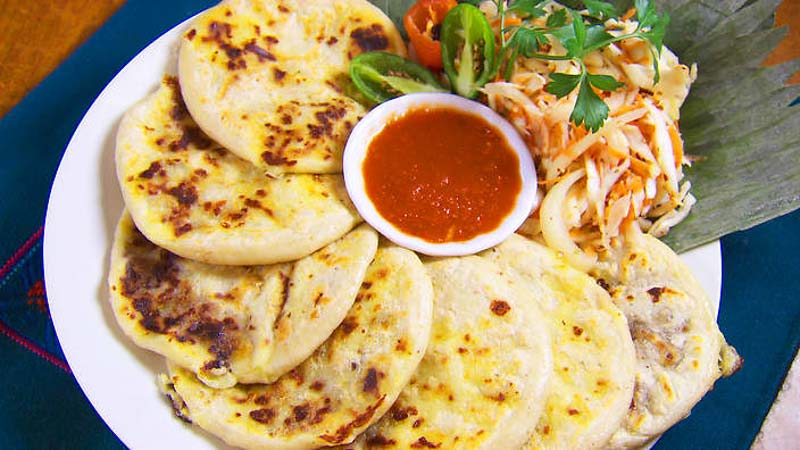
El Salvador captivates visitors with scenic volcanoes, lush forests, and a culinary heritage infused with bold flavors. For travelers hungry to experience both adventure and gastronomy, this compact Central American gem offers more than enough reasons to pack a suitcase.
Ideal Seasons to Explore
The dry season, stretching from November through April, brings bright skies and comfortable conditions, making it a prime time to discover El Salvador’s beaches, national parks, and charming cities. If you prefer fewer crowds, a trip during the rainy months (May to October) reveals verdant landscapes and colorful blossoms throughout the countryside—just be ready for afternoon showers.
Fascinating Regions and Travel Highlights
- Ruta de las Flores
A scenic route weaving through colonial towns, coffee plantations, and flower-lined roads. Juayúa, a town along the route, is famous for its weekend food festival—a perfect opportunity to indulge in popular salvadoran food while taking in local traditions. - Suchitoto
A colonial hub known for its narrow cobblestone streets and bold cultural scene. Explore the tranquil Lake Suchitlán by boat, then spend the evening in an open-air café sampling local treats. - El Tunco
A laid-back surf village on the Pacific coast, popular among backpackers and wave enthusiasts. The sunsets here dazzle, and seafood dishes abound in the rustic beachside eateries.
Embarking on a Culinary Journey
El Salvador’s traditional fare celebrates fresh ingredients and comforting spices. Expect a bounty of corn-based staples, beans, local cheeses, and tropical produce.
Sopa de Pata
An iconic offering, sopa de pata is a hearty stew that brings together cow feet, tripe, vegetables, and aromatic herbs. It’s simmered to create a rich, full-bodied taste—an experience that awakens every sense. Served piping hot, it’s often garnished with cilantro or fresh lime, adding a bright note to the rustic flavor.

Pupusas
Arguably the most famous dish in the nation, pupusas are thick corn tortillas stuffed with combinations like cheese and beans or pork. Accompanied by curtido (a tangy pickled cabbage slaw) and a mild tomato sauce, they balance rich fillings with a refreshing crunch and sweetness.
Elote Loco
Translating to “crazy corn,” elote loco takes grilled or boiled corn on the cob, slathers it in mayonnaise, mustard, ketchup, and cheese, creating a blend that’s sweet, tangy, and surprisingly satisfying.
Other Must-Try Dishes
Pan con pollo (savory chicken sandwich), yucafrita (crispy cassava fries), and tamales de elote (sweet corn tamales) also showcase the variety of tastes that run through Salvadoran cuisine. Each dish features flavors that lean toward comforting, earthy notes, supported by a dash of bright seasoning.
Where to Savor Authentic Flavors
- Juayúa Food Fest
Stroll through rows of local stalls that offer everything from grilled meats to tempting pastries. The friendly atmosphere and live music make it easy to mingle with locals and fellow travelers. - Pupuserías in Santa Ana
Santa Ana is known for its vibrant pupuserías, where cooks bustle behind the grill turning out fresh pupusas with an array of fillings. Grab a seat at a plastic table and be ready to devour them hot off the griddle. - San Salvador Markets
The nation’s capital teems with bustling markets like Mercado Central, where fruit vendors, herbalists, and food stands pack the aisles. Dive in for an authentic taste of daily Salvadoran life and pick up some locally produced coffee beans for a take-home treat.
Suggestions for the Curious Foodie
- Experiment with regional beverages: Horchata de morro (nutty, sweet drink) and tamarindo (tart tamarind-based refresher) pair wonderfully with traditional meals.
- Engage with local cooks: Many towns host small-scale cooking classes. Nothing cements memories quite like creating your own batch of pupusas from scratch.
- Request homemade salsas: From mild tomato blends to spicier creations, Salvadoran homes often have their own unique versions. A dash of the right salsa can deepen the flavors of any dish.
A Note on Cultural Etiquette
When dining with locals, share conversation, respect personal space, and show curiosity about the country’s heritage. A spirit of mutual appreciation goes a long way toward making new friends.
Conclusion
At the end of any journey through El Salvador, the warmth of its people and the taste of its cuisine linger in mind and heart alike. Whether you wander the flower-laden roads of Ruta de las Flores or revel in the surf culture of El Tunco, you’ll find that this small nation promises big rewards: diverse landscapes, welcoming communities, and the flavors of sopa de pata and other popular salvadoran food that leave an indelible mark.




